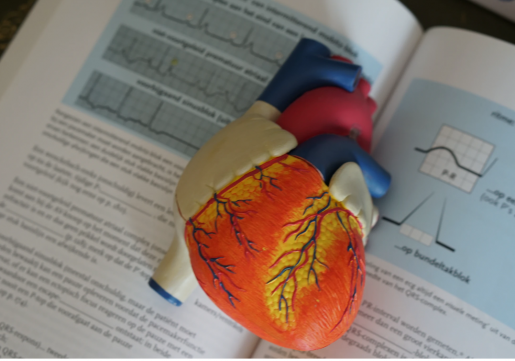Balancing Life and Ethics: The Debate over Normothermic Regional Perfusion in Organ Donation
Organ donation and transplant policies are crucial dimensions of modern medicine. According to the Health Resources & Services Administration, there were more than 42,800 transplants performed in 2022, a 3.7% increase from 2021. But the need for organs still far exceeds available donations. Each day, approximately 22 people die while waiting for a transplant.
Organ donation is divided into living and deceased donations – only certain organs (like a single kidney or lung) are eligible for living donation. After a donor’s death, more organs and tissues become available for donation, and deceased donors are the only source of heart transplants.
However, there is a narrow window of time when organs may be collected from a deceased donor and transplanted to a recipient. This means that even if someone is a registered organ donor, there is a chance their donated organs will be damaged from lack of circulation, rendering them unusable.
Recently, an ethical debate surrounding an organ procurement procedure known as normothermic regional perfusion (NRP) has developed. Understanding this issue (and how healthcare policymakers address it) requires discussing the ‘dead donor rule’ and delving into the debated criteria for determining death.
The 3 D’s: the dead-donor rule and death
The ‘dead-donor rule’ (DDR) is an ethical principle that restricts certain organ transplant procedures from being performed until after the donor has been declared dead, ensuring that the removal of organs does not cause the donor’s death. The DDR serves to prevent the intentional killing or allowing the death of patients to collect organs for transplantation. It is important to note that this rule is not codified in law but rather a widely accepted ethical norm.
Determining when death has occurred is not such a straightforward matter. Two different criteria are typically used to establish that a person is deceased – neurological (brain) and cardiopulmonary (circulatory) – which originate from the 1981 Uniform Determination of Death Act.
Racing against time
Once an organ donor is declared dead, a race ensues to procure the needed organs with as little ischemic damage as possible. This is where normothermic regional perfusion enters the picture. This is a technique that tries to thread the ethical needle between facilitating proper deceased organ donation and increasing the longevity of donated organs. Thoracoabdominal normothermic regional perfusion is a process of re-establishing partial circulation to the body to better preserve thoracoabdominal organs, including the heart (also called TA-NRP).
Typically, NRP is used when a patient does not meet the criteria for neurological death but circulatory death has been determined. This is termed a ‘controlled donation after circulatory determination of death’ (cDCD). Before the perfusion begins, there is at least a 5-minute ‘hands-off’ period after patient death has been determined and before perfusion may begin in case of autoresuscitation does not occur. Following this, they begin the perfusion process, and steps are taken to prevent restoring circulation to the brain (e.g., ligation or clamping of the blood vessels).
A critical issue in the debate about the permissibility of NRP is the partial re-establishment of circulation to better preserve thoracic organs like the heart for donation. Some argue that the use of normothermic regional perfusion contradicts or is a “violation” of the Uniform Determination of Death Act since the definition of death in the Act stipulates the irreversible cessation of circulatory or neurological functions.
Dr. Matthew DeCamp, MD, PhD and colleagues argue that deeming a person dead based on circulatory criteria, knowing the organ procurement team will be re-establishing circulation, means the person was not dead to begin with. They point out later that there is “a large and ethically significant difference between perfusing an organ versus perfusing an individual.” Dr. Adam Omelianchuk, a bioethicist and professor of medical ethics at Baylor, believes that thoracoabdominal normothermic regional perfusion is inconsistent with Texas law and has argued that death can only be legally declared once circulation has permanently ceased, which conflicts with the potential restart of circulatory function in of thoracoabdominal normothermic regional perfusion.
On the other side of this debate, ethicists argue that NRP does not violate the Act. In a recent letter to the editor of the American Journal of Transplantation, Dr. Brendan Parent and co-authors claim, “if irreversibility were interpreted as ‘circulation has stopped and cannot be restarted,’ then almost no one would be dead, including donors involved in standard DCD. We must therefore read intention into the definition of irreversibility—circulation has stopped and resuscitation—which is circulation with the intent to revive the patient—is not being attempted.”
Changes in UDDA policy: Is it necessary?
The debate over normothermic regional perfusion policies and the UDDA is ongoing. Recently, experts from the Universal Law Commission met to discuss the possibility of changing the UDDA, with some (including Omelianchuk) advocating for changes to reduce confusion and disagreements about the determination of death in light of the availability of thoracoabdominal normothermic regional perfusion. However, as of now, no revisions to the UDDA are in the pipeline.
Policymaking about thoracoabdominal normothermic regional perfusion can be ethically complex, as hospital systems face the need to craft policies addressing a practice that is not yet ethically or medically settled. Ethicists also encourage decision makers to consider how transparent hospitals should be with families of donors about the process of organ donation when TA-NRP is the mode of procurement. For now, one local hospital has opted to issue several guiding questions to their transplant teams that should be considered.
In this context, American hospitals sit at an inflection point. Absent further clarification of the UDDA or changes in the acceptance of the dead donor rule, disagreements about the permissibility of normothermic regional perfusion are likely to endure.
By Jared Smith, Ph.D., clinical ethics fellow, Center for Medical Ethics and Health Policy, Baylor College of Medicine, Houston, TX



